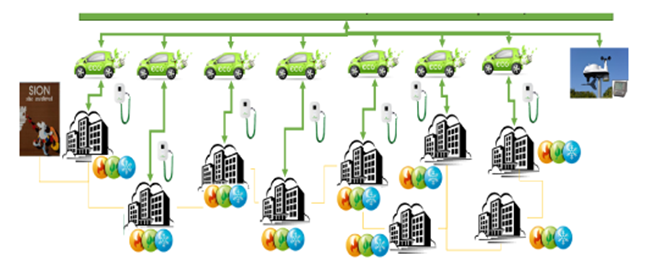All projects
FURIES
Optimization of the management of charging stations of EVs within an existing network of 10 hotels of Val d’Hérens (Wallis) by exploiting the flexibility of EVs in order to minimize their impact on the electric grid, synchronizing when possible their consumption with the PV energy production.
Goflex
The GOFLEX project will innovate, integrate, further develop and demonstrate a group of electricity smart-grid technologies, enabling the cost-effective use of demand response in distribution grids, increasing the grids’ available adaptation capacity and safely supporting an increasing share of renewable electricity generation.
Hotmaps
HotMaps will develop, demonstrate and disseminate a toolbox to support public authorities, energy agencies and planners in strategic heating and cooling planning on local, regional and national levels, and in-line with EU policies.
MAPEC
As part of the energy transition, and for almost five years now, several municipalities have been Innovative lighting solutions are testing a transition to so-called "Smart Lighting". Today, the whole of Switzerland's 2,200 municipalities is facing this paradigm shift. Nevertheless, they do not benefit from only very limited support in terms of figures to make the right decisions or to correctly plan their investments.
MSID
MSID - Distributed Intelligent MicroStorage wants to design a bidirectional integrated product that manages decentralized energy storage via lithium batteries that are compatible with distributor protocols (GRD).
REDI
L’arrivée massive des nouvelles énergies renouvelables (NER) bouleverse fondamentalement le paysage énergétique suisse. Les distributeurs d’électricité, les politiques ou les consommateurs ont besoin d’informations. Le projet REDI veut développer une plateforme Internet rassemblant les informations mises à jour en continu et liées au domaine de l’énergie afin d’aider l’utilisateur dans ses prises de décisions, que ce soit dans le choix des ressources à subventionner, les modèles d’affaires à développer ou la compensation de l’évolution de la consommation régionale.






